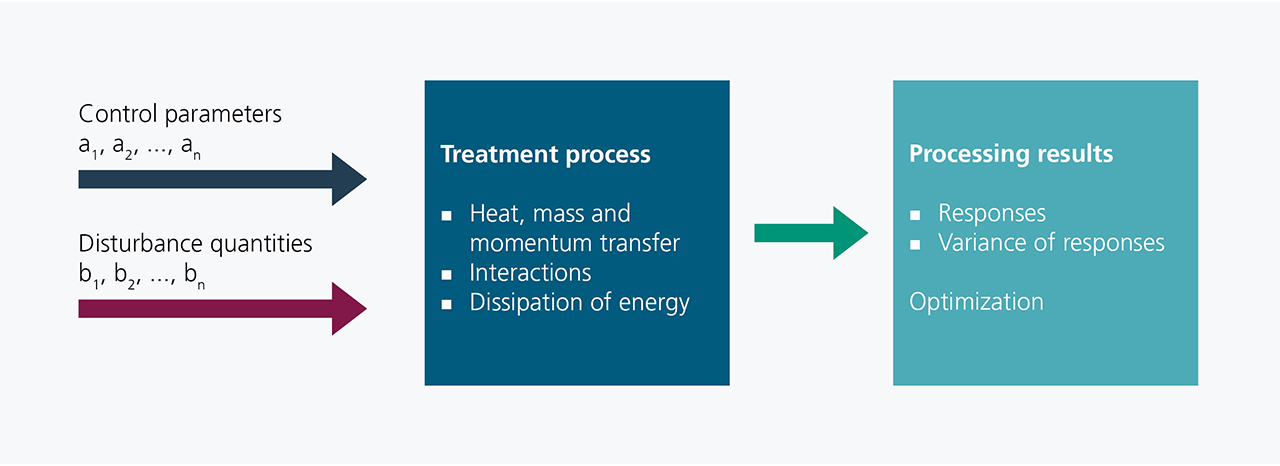The simulation of laser-based manufacturing processes, e.g. laser cutting and welding as well as micro material processing, is based on thermodynamic principles. In comparison with the real process and competing technologies, conclusions can be drawn about energy efficiency and achievable process efficiencies. In addition, complex interaction processes of laser material processing are mapped virtually via model developments. Variation calculations and sensitivity analyses enable a description of functional dependencies between control, influence, disturbance and target variables of a laser material processing process.
Simulation of Production Processes
Feasibility Analysis of Material Processing with Laser Beams
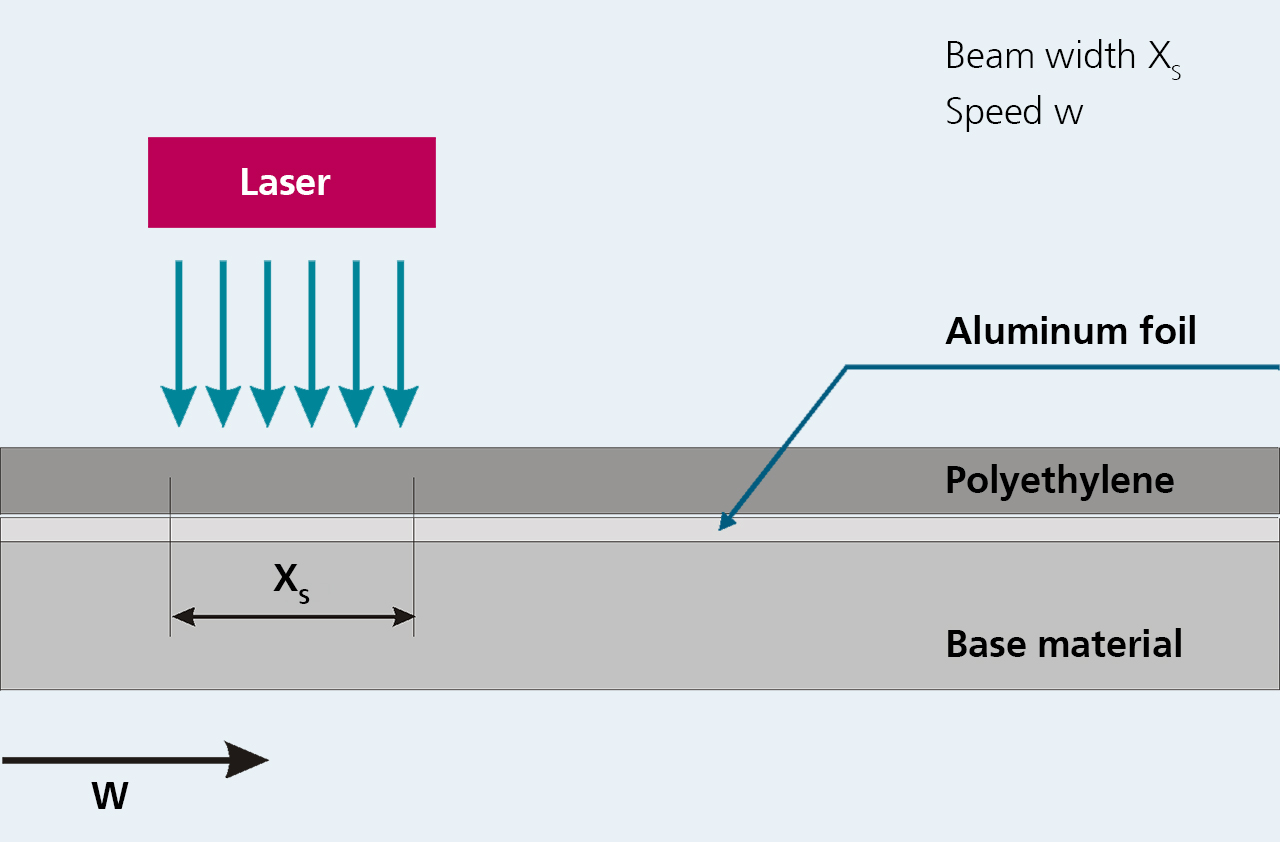
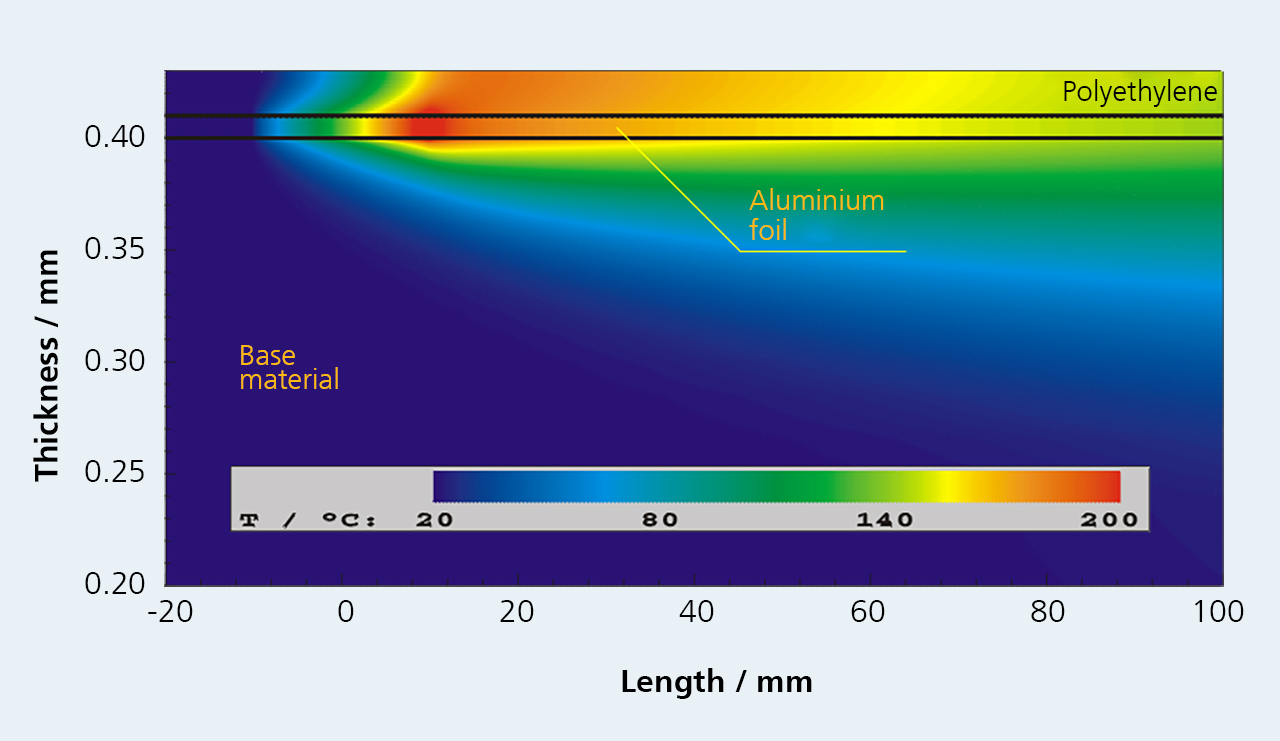
The laser as a beam tool has already been able to open up a large number of applications for macro- and micro-machining in industrial practice. The use of laser beams proves to be particularly advantageous when high power intensities are required spatially and temporally concentrated for a material processing process. On the other hand, using the technical possibilities of fast beam deflection and beam shaping, the large-area processing of materials is also becoming increasingly interesting. Based on our experience in design, modeling, analysis and simulation, we evaluate the feasibility and practicability of laser material processing.
Our Offer:
- Determining the power requirements of laser material processing operations
- Determination of coupling and efficiency rates in laser material processing
- Addressing issues related to the technical feasibility of thermal material processing
- Experimental verification of theoretically derived solutions
Thermal Simulation
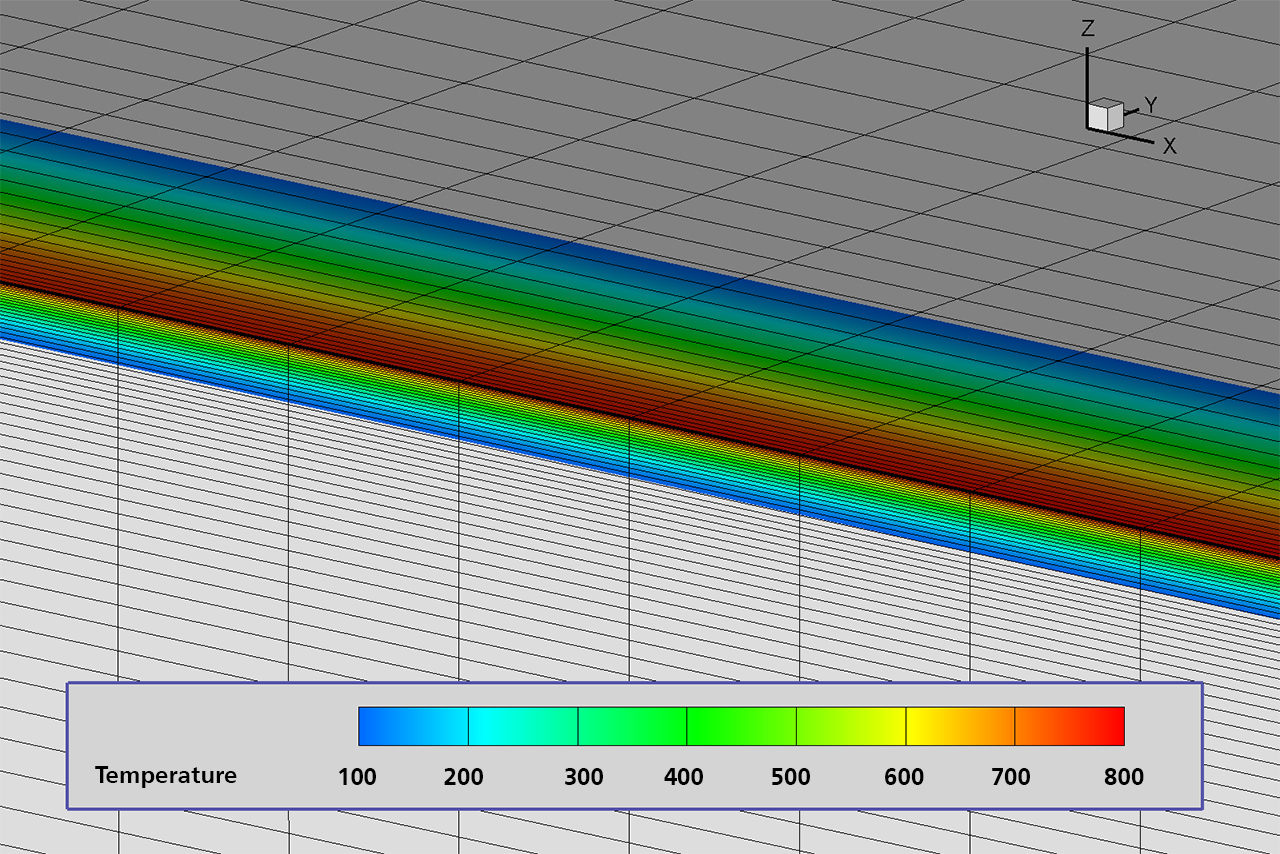
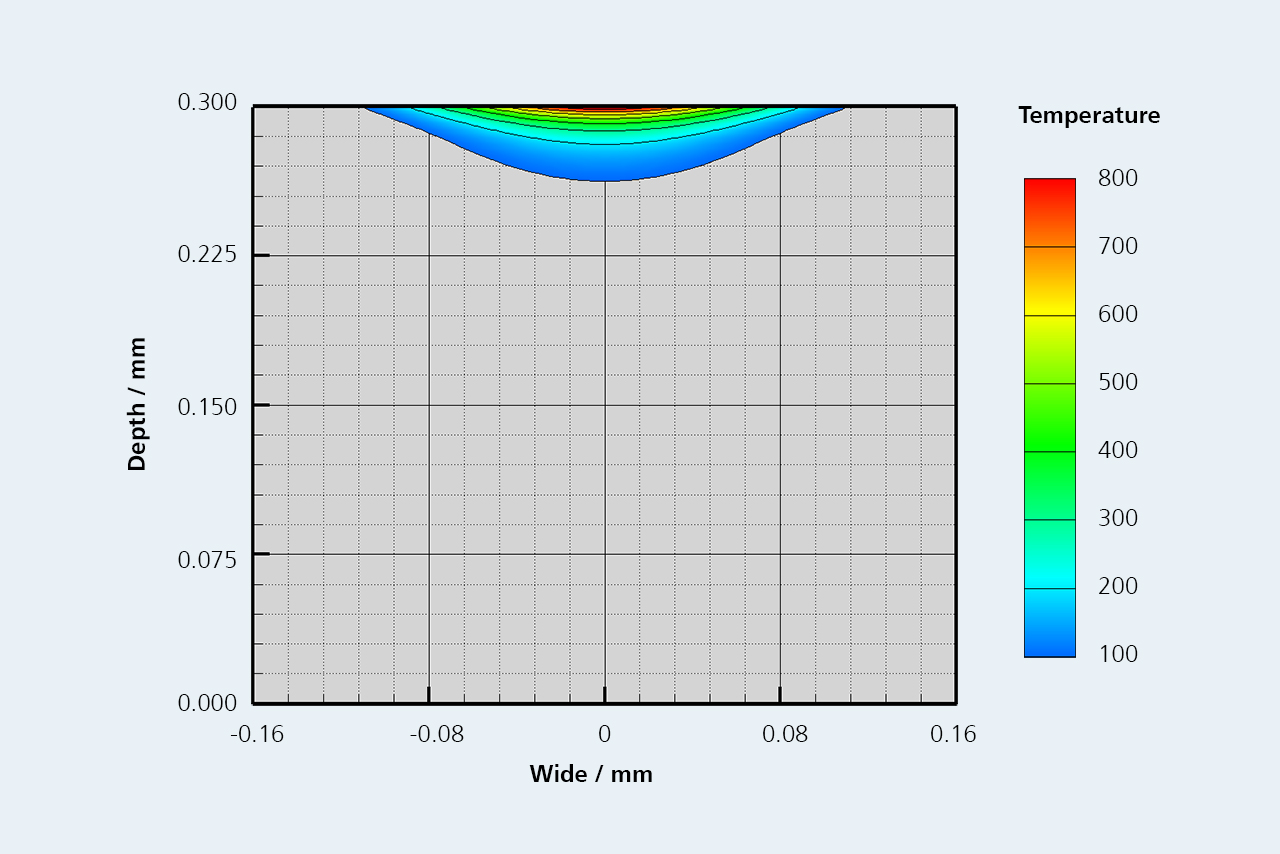
The simulation is a very comprehensive tool for predicting the spatial and temporal development of a temperature distribution. Simulated temperature distributions and the resulting heating and cooling profiles during high-speed processing of steel sheet using laser radiation are shown as examples. Reliable statements about the local and global thermal loads of processed workpieces can be derived as a result of those computations. In addition, appropriate simulation models offer the capability to perform virtual low-cost parameter studies and/or sensitivity analyses with the objective of process optimization.
Our Offer:
- Determining coupling and process efficiencies by means of numerical simulation
- Simulate the temporal and spatial evolution of temperature fields during laser material processing
- Calculation of resulting heating and cooling rates
Flow Simulation in Laser-Induced Melts
Simulation of melt pool dynamics during laser-induced melting of metals. © Fraunhofer IWS
Laser-induced local melting of materials is important for a number of different kinds of laser-based manufacturing processes, such as surface modification (e.g. re-melting, alloying, coating) or heat-conduction mode laser beam welding of thin-section sheet metals. The resulting track geometries are significantly influenced by the flow processes in the melt.
Our Offer:
- Simulating track geometries for laser-induced melting and remelting processes
- Inclusion of the Marangoni effect with consideration of surface tension as a function of temperature and interfacial activity
- Variational calculations to identify optimal parameter settings
Gas Dynamic Simulation
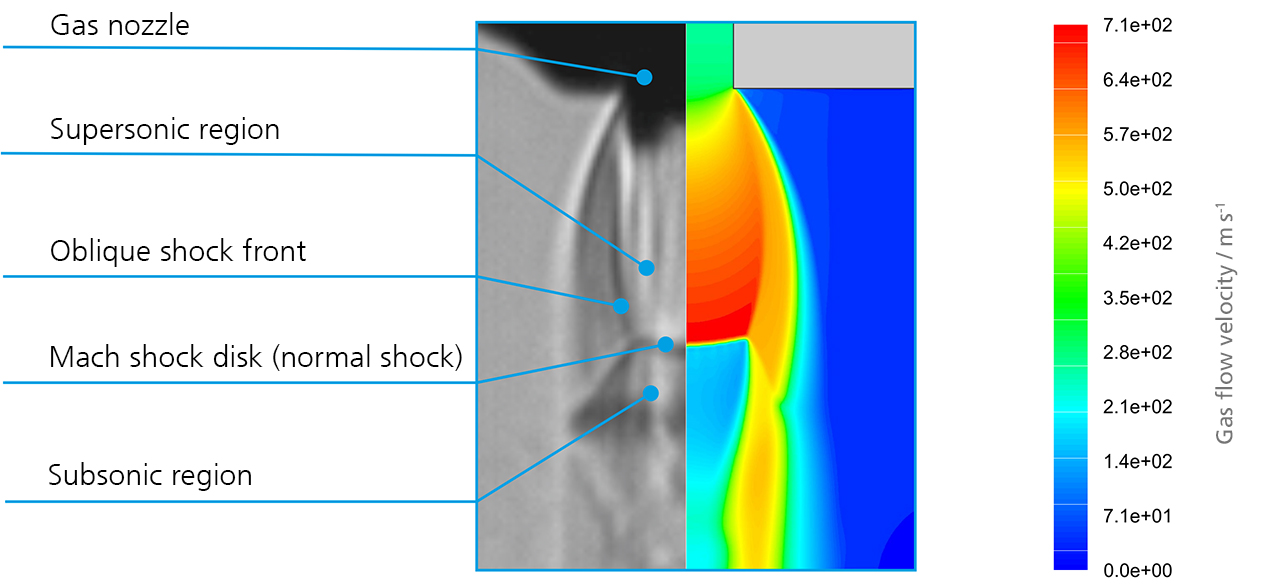
Gases are often applied in laser material processing for different tasks such as shielding the process zone from the ambient atmosphere, blowing out the molten material in case of laser cutting or air quality control in processing stations. The simulation of these gas flows with corresponding parameter studies and sensitivity analyses can be used as a reliable and effective tool for a design and optimization of fluidic process and plant components.
Our Offer:
- Develop gas dynamic models for laser material processing
- Evaluation of inert gas and process gas flows
- Fluidic analysis and optimization of gas flow in processing heads
- Fluidic analysis and optimization of nozzle designs
- Analysis of the cutting gas flow in laser cutting including the kerf
- Analyzing and optimizing the gas flow in working chambers of laser material processing
Design of Experiment (DOE) Approaches
Laser materials processing is characterized by a high number of variables which influence the processing results. On the one hand, these are user-selected parameters such as laser power and processing speed and, on the other hand, many disturbance variables causing processing faults and/or deviations from the expected results. The detailed and statistically validated evaluation of the influence of factors and interactions on target variable values and target variable scatter can therefore usually only be achieved by consistent use of methods of statistical experimental design and evaluation.
Our Scope of Service:
- Creating experimental designs using statistical software
- Investigation of cause-effect relationships in the application field of laser material processing
- Quantitative process analyses under consideration of statistical aspects
- Deriving regression models to describe functional and correlation-based relationships between control and target variables
- Identification of optimal parameter constellations
Energetic Process Design and Evaluation
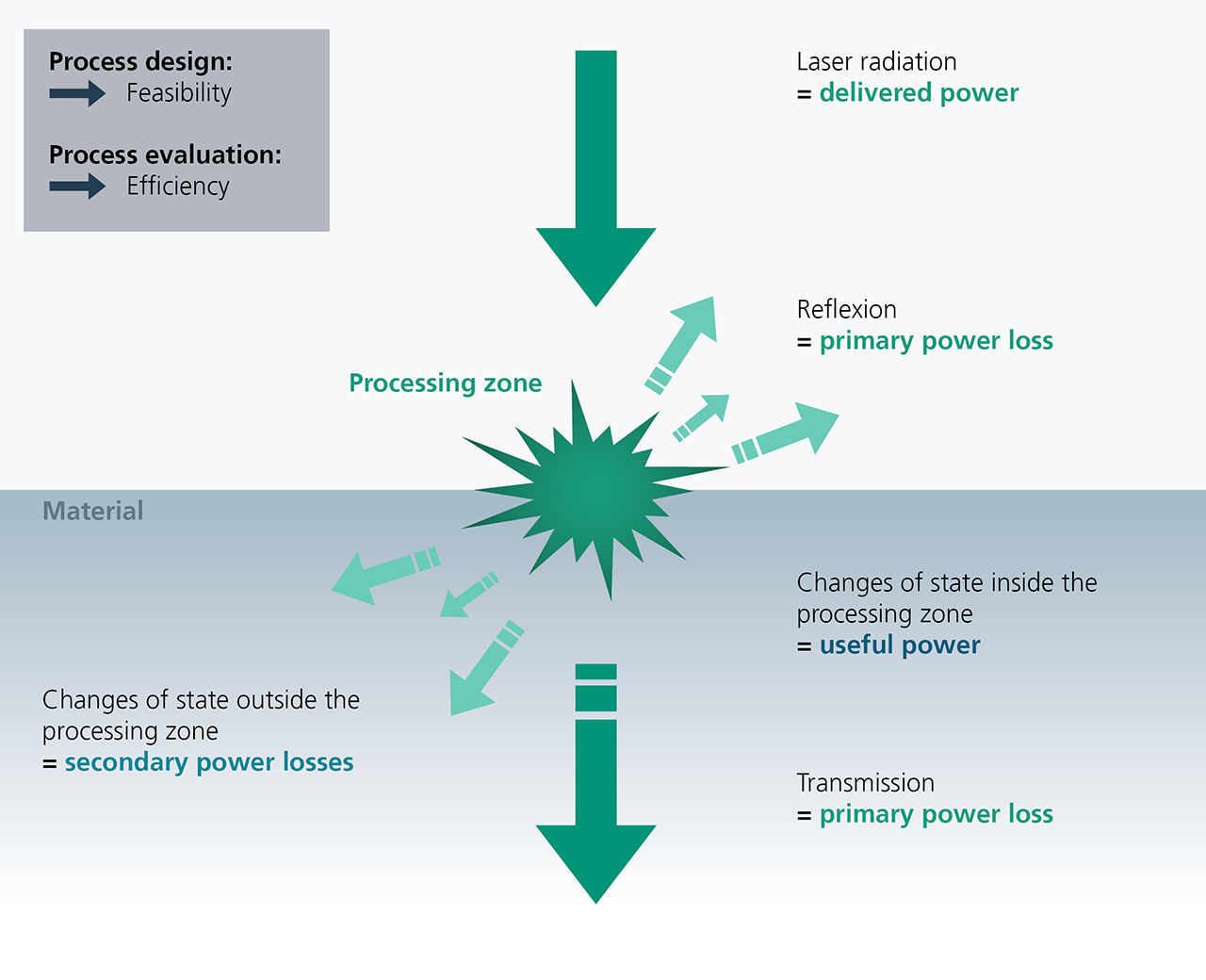
The energetic evaluation of laser-based manufacturing methods, not only, but also in comparison to competing techniques, increasingly gains importance,in particular with respect to a resource-friendly and efficient production. The effective energy or power requirements for temporal or continuous processes can be estimated according to the basic laws of thermodynamics and corresponding equations of state (including involved phase changes). These values are a measure for the theoretical feasibility of a particular process under energetic viewpoints. The ratio of theses theoretical values to actually applied laser energies or powers define the overall process efficiency.
Our Offer:
- Theoretical estimation of the power requirements of material processing operations
- Determination of coupling efficiencies and process efficiencies
- Energetic evaluation of machining processes
- Evaluation of energy or power losses
- Analyze solution concepts to increase process efficiency
 Fraunhofer Institute for Material and Beam Technology IWS
Fraunhofer Institute for Material and Beam Technology IWS